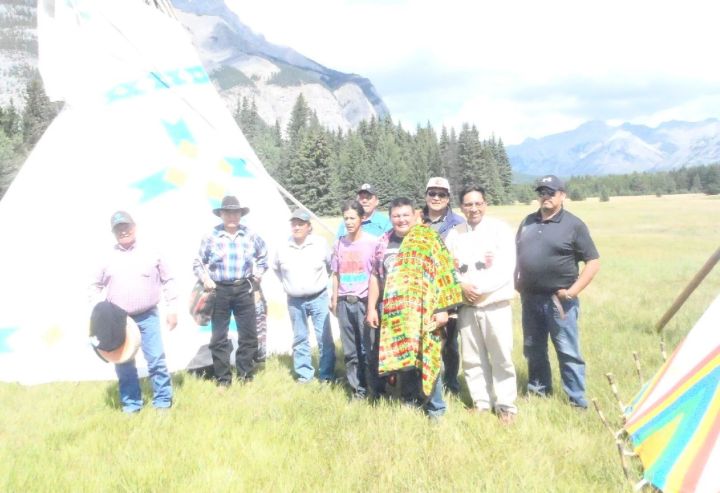The American Bison Society is meeting in Banff this week for their annual meeting and workshop, marking the first time the society has met in Canada.

The meeting comes just months ahead of the planned re-introduction of bison to Banff National Park.
READ MORE: Federal government announces bison returning to Banff National Park
Bison, also known as buffalo, roamed an area along in the eastern slopes of the Rockies for thousands of years but were wiped out by hunting in the mid 1800s.
“We did something wrong, and now we have a chance to get it right,” conservationist Harvey Locke said.
Locke, who is also the founder of the Yellowstone to Yukon initiative is also unveiling his new book Tuesday, “The Last of the Buffalo”, which details the native animal’s story in Alberta.
“This is Canada’s rhinoceros or our elephant – this is a really cool species.”
“It’s what’s known as the keystone species, and you really need those in the system for the system to function properly,” Locke said.
For First Nations communities, meanwhile, the animal’s significance goes far beyond its place in the ecosystem.

Get daily National news
“Buffalo, of course, has meant a great deal to our nation and many others as a source of food clothing and shelter,” William Snow, consultation manager with Stoney Tribal Administration, said.
He was among dozens of First Nations representatives taking part in the two-day conference Monday and Tuesday.
They’re just part of a continental system of experts that the national park will lean on as they prepare to welcome bison back to an area of the park called Panther Valley.
RELATED: Elk Island bison begin journey ‘home’ to Blackfeet Nations reserve
“Putting these buffalo back on the landscape, it’s a very supportive initiative. It’s a very supported project,” Leona Tracey from the Blackfeet First Nation in Montana said. Bison from Elk Island National Park were successfully introduced to her First Nation earlier this year.
Banff’s bisons, also from Elk Island, will be contained to a paddock initially in January. Then, the animals will be released into a partially fenced area, about 425 square kilometres in size, in the backcountry. There is hope the animals will eventually be free-roaming.
“The idea to bring them back to Banff is to have them run wild in the park – that’s fundamentally essential -because, unlike all the other native wildlife in Canada, for some reason, we felt the need to keep bison in jail,” Locke said.
Critics, however, have raised concerns about the dangers of bison interaction with humans and vehicles hitting the massive animals on the highway. Ranchers also have expressed concerns about whether the animals could carry anthrax.
“The animals we have, we know, have been disease-free for over 100 years – they have veterinary certificates – they’re in Elk Island National Park. There is no risk of disease from these animals,” Locke said.
“There’s a risk of contracting disease among animals if, say, cattle have disease. But the cattle are not supposed to have disease if we want to maintain our high beef producing status in Canada. So that’s not a reason to keep bison away.”
Conservationists said it will take time for residents and visitors to learn to live with the animals the same way they do with bears and elk.
Stoney Nakoda First Nation, meanwhile, prepares to welcome the animal spiritually. A special ceremony was held in August to welcome the animals.
“In our cultural way, we are making room for them, not only in terms of space, but in terms of ceremony,” Snow said.









Comments